From March 2020 individuals, wider society and health care systems have all been seriously affected by the COVID-19 pandemic (WHO, 2020). It is likely that the pandemic has more severely impacted on people with prior mental health problems: generally research suggests that, pre-pandemic, people with Severe Mental Illness (SMI) (here we include schizophrenia, bi-polar disorder and major depressive disorder) could expect to experience considerable social exclusion, poor physical health and die up to 20 years earlier than the general population (Walker et al, 2015, NICE, 2018). They are also vulnerable to conditions such as diabetes (T2), cardiovascular disease (CVD), stroke and cancers, often due to lifestyle factors – poor diet, smoking, and lack of exercise (Lawrence et al, 2013). More generally the pandemic and subsequent lockdown may have exacerbated their physical and mental health. Many people with SMI either live alone or in shared community residential settings, and the closure of community-based rehabilitation centres during the pandemic, and absence of community activities, can exacerbate this sense of isolation and loneliness, leading potentially to mental health deterioration. Moreover, a reduction in services may limit access to routine health care including community and hospital psychiatric services.













